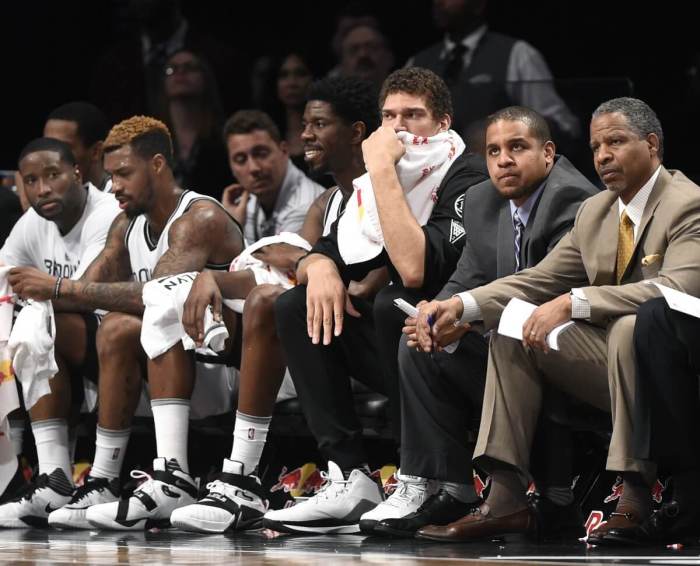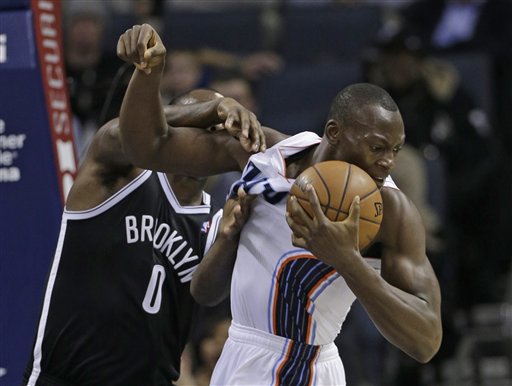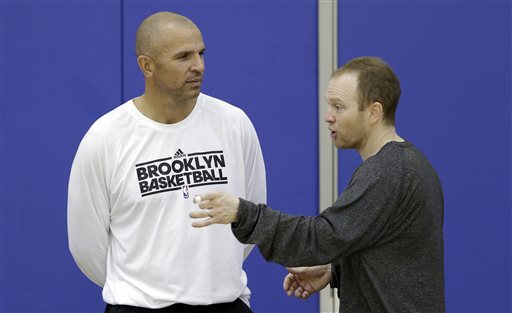In the closing days of training camp, there was a lot of buzz about the Nets utilizing their three athletic wings – Courtney Lee, Chris Douglas-Roberts and Terrence Williams – and pairing  them with a point guard and Brook Lopez in the middle to create a small-ball lineup. The NBA version of the “Wildcat,” as some have already called the rotation.
them with a point guard and Brook Lopez in the middle to create a small-ball lineup. The NBA version of the “Wildcat,” as some have already called the rotation.
While it was only one game, the initial audition for the Wildcat last night in Minnesota led to some very alarming results for the Nets. Sebastian already broke down through the use of visuals how using the Wildcat on the final play of the game last night ultimately cost the team, but the rotation was more or less a flop at earlier points in the game and its use may have contributed to a very clear momentum shift in the fourth quarter that had a 16-point Nets lead seemingly evaporate in a few minutes.
According to the game flows at one of my new favorite sites, PopcornMachine.net, the two variations of the Wildcat used by the Nets – one with Rafer Alston running the point, the other with Devin Harris – produced a +/- of -9 in about 5 minutes of collective play in the fourth quarter. Granted, it was the ineptitude of the starting 5 that ultimately led to the pendulum swinging in the Wolves direction in the game’s final minutes, but that’s just a terrible swing during a critical juncture of the game.
The Nets primarily employed the Wildcat in the fourth starting at the 9:15 mark when Alston subbed in for Harris, TWill came in for Yi and Lopez came in for Josh Boone. That group played together for about 4 minutes and put up a +/- of -5.
The most curious thing right off the bat was why Alston was used by Frank in the rotation, when the talk in practice all last week was utilizing the speed of the wings, with Devin Harris’ incredible quickness. Alston, who’s clearly lost a step or three, gets exposed playing against younger, quicker point guards, and it’s no coincidence that Johnny Flynn started to take over the game once Harris went to the bench.
Now, when you looked at who Minnesota was running out there in their frontcourt – Al Jefferson, Corey Brewer and Sasha Pavlovic – its not as if the Nets were terribly undersized out there on the floor. But if you go back to some of Minnesota’s offensive sets during that period, they just ripped the Nets to shreds on the inside. Four of the five field goals made by the Wolves in that 4 minute stretch came on either lay-ups or dunks. As Sebastian noted in his recap, the Wolves were using the pick and roll exclusively to pull Lopez out of the paint. With a smallish lineup, this makes the interior defense a nightmare.
The Nets weren’t much better on offense. During the primary Wildcat stretch they had 9 offensive possession and scored 6 points, good for an offensive efficiency of a putrid 66.6 (small samples sizes rule).
By the time Harris had subbed in for Alston for one play, before Yi was subbed in for Twill to put the starting lineup back out on the floor for the game’s closing minutes, Minnesota had already taken advantage of the Wildcat rotation. They of course, capped off the Wildcat’s ineffectiveness on the last play of the game.
So that leaves me with two questions for the Nets if they continue to use this rotation in 4-5 minute stretches during the game: Can it be even remotely effective with a slower guard in Alston running the point rather than Devin, and is there a way for this team to improve its pick and roll defense to keep the interior protected during these stretches? I think I already know the answers here, but out of fairness to the team and Lawrence Frank, I’ll reserve my ultimate judgment until the use of this rotation becomes clearer.


















